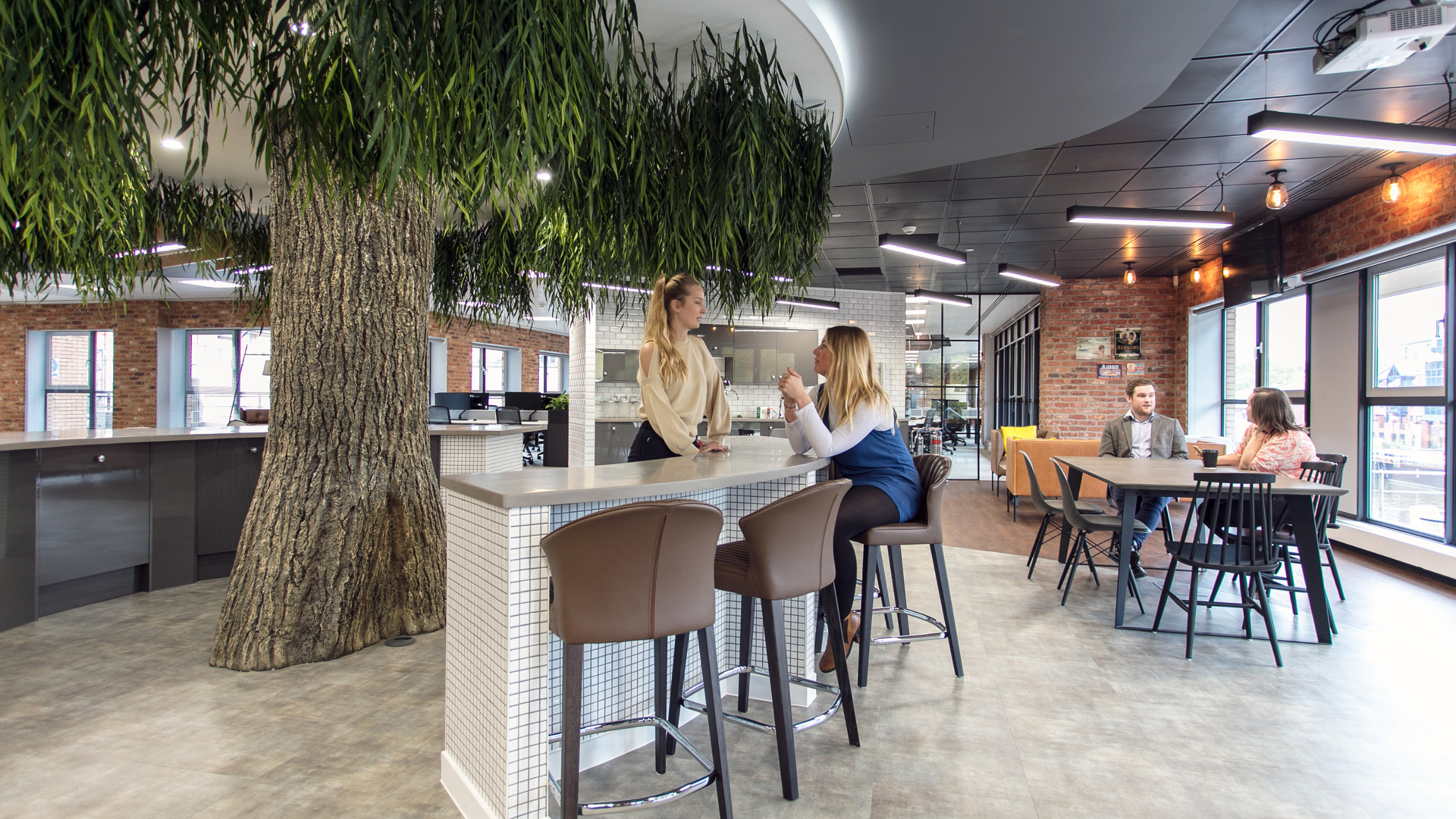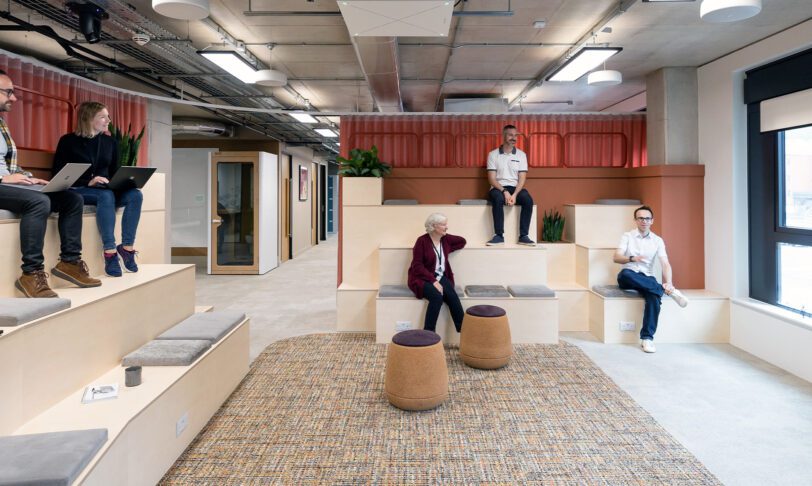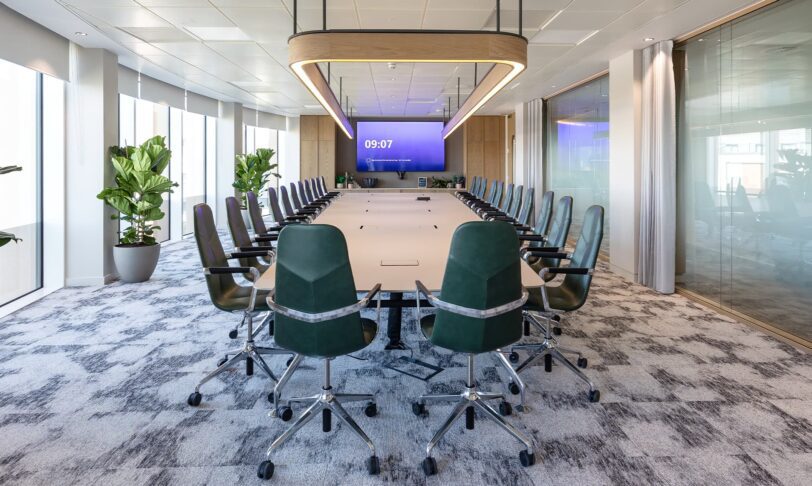Post-pandemic relationships with the workplace: A survey of southwest businesses
We partnered with Business Insider and Morton Property Consultants to take the temperature of the Southwest commercial property market. 88 of the West Country’s leading businesses were surveyed, allowing us to understand their relationships to the workplace, their working models and their future plans.
We’ve delved into the top 3 themes discussed, which are outlined below, alongside market perspective from Morton Property Consultants.
- Companies cautiously move to a hybrid model centered around the office
- Tenants are rethinking how they use their existing space
- The office is still a vital tool for companies to foster creativity, innovation, culture and careers
Companies cautiously move to a hybrid model centered around the office
We’ve seen many companies test the water, cautiously enticing staff back into the office first one, then two and now often three days a week. The ones who have navigated this successfully are often the organisations who have let themselves be led by their employees, whilst providing a destination workplace. Typically, you’ll find top-grade spaces with great sustainability credentials, which in turn provides a compelling employee experience.
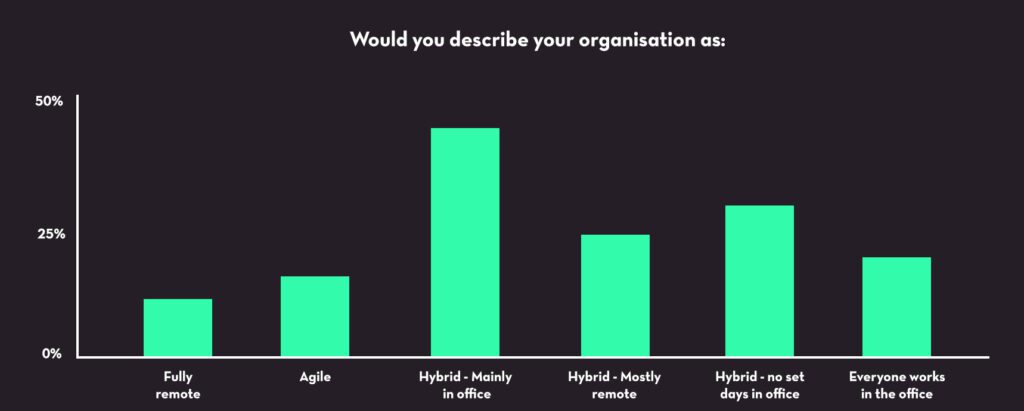
Morton Property Consultants:
“A glance at the take-up figures for Bristol city centre, by far the region’s biggest market, demonstrate that the shift towards more remote and hybrid working is not leading to an overall reduction in demand for office space. In fact, the first three quarters of 2022 show total uptake at, or above, pre-Covid averages.
Drill down into those figures and you start to see what’s going on beneath the hood, how shifts in working practices are impacting the market. Top grade space take-up has risen significantly – up over 40% – while demand for the lowest grade has plummeted by two thirds.
Critically, businesses are investing in quality space which ticks all of the ESG boxes and offers the flexibility to accommodate the new templates for working, with a mix of collaborative and individual work areas.
The pandemic served to encourage more businesses to adopt flexible working, and for most of them, that’s now here to stay.”
Tenants are rethinking how they use their existing space
Many organisations have made the decision to reconfigure their space to better suit their post-pandemic needs. These include increased collaborative space, better technology, more private working areas and the all-important home comforts.
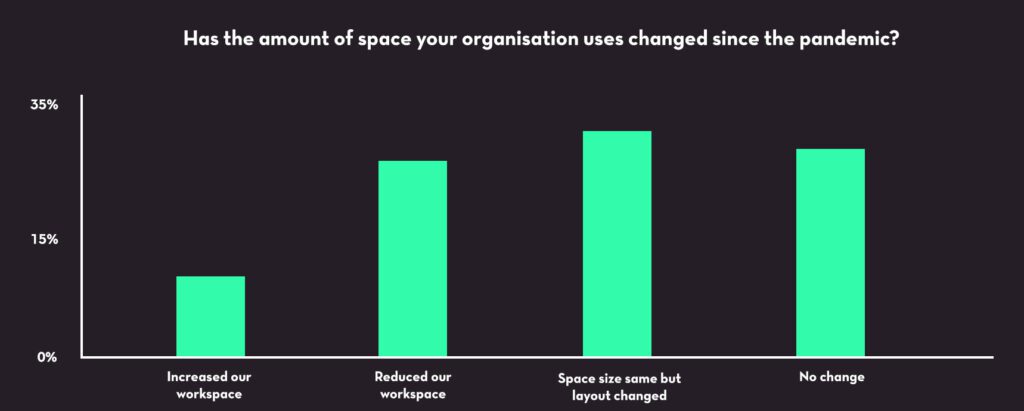
Morton Property Consultants:
“Almost half of respondents constantly re-evaluating their space is no surprise to me. “The office” was an item that used to come up on board or partners’ agendas once a year perhaps, or even just when a lease event was looming. Now it’s being discussed monthly.
Have we got enough? Too much? Do we need to reconfigure to accommodate the changing ways in which people are working? How can we make our space work harder?
The office is now a dynamic feature of business planning… no longer viewed as a dead weight cost on a company’s finances but an investment in making a business more efficient as well as a better place to work.
Fortunately, many landlords now see this as an opportunity rather than a threat and are prepared to offer shorter leases with break clauses because tenants are prepared to pay a premium… and so the higher rent achieved adds up to the same capital value. The emergence of “Cat A Plus” space is also driving change: landlords are offering to pay for office fit-outs and amortise that cost over the length of the lease through an additional charge, while tenants can sidestep a hefty upfront investment.”
The office is still a vital tool for companies to foster creativity, innovation, culture and careers
At Interaction, we believe in the magic that happens when people come together. Most companies now the see the office as a pivotal space for driving learning, connections and creativity.
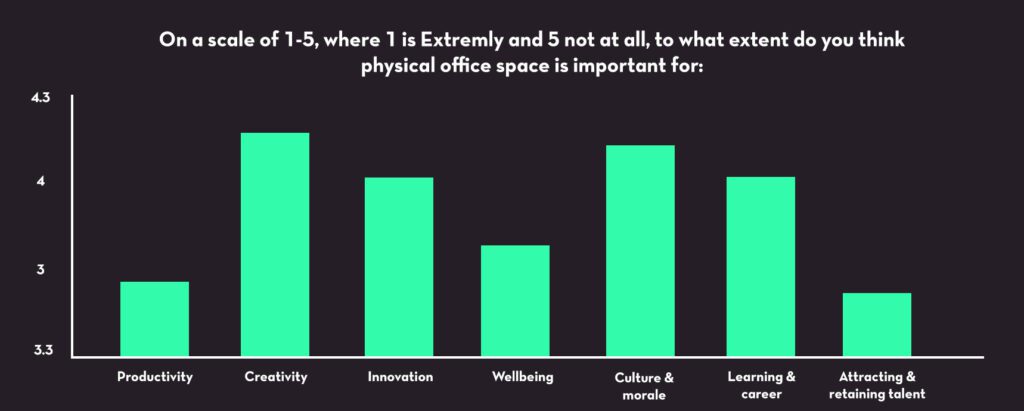
Morton Property Consultants:
“There were a couple of very interesting results in those responses, but when you consider how heavily every business now relies on creativity and collaboration, perhaps it shouldn’t be such a surprise.
Not too long ago, we’d design a building or floor for a specific sector – giving different industries vastly different office styles. Now a typical hybrid floor space is 50% agile/collaborative space, 50% desks… and that can apply across sectors.
Top-down hierarchies have been largely replaced by flatter management structures, team and project working… and that’s playing out in today’s office lay-outs.
Moreover, the critical need for an office for maintaining company culture, morale and wellbeing came across loud and clear as the pandemic wore on… and younger employees in particular found it increasingly problematic to work remotely for large chunks of time without interaction with colleagues and the all-important mentorship that goes on within an organisation.”
